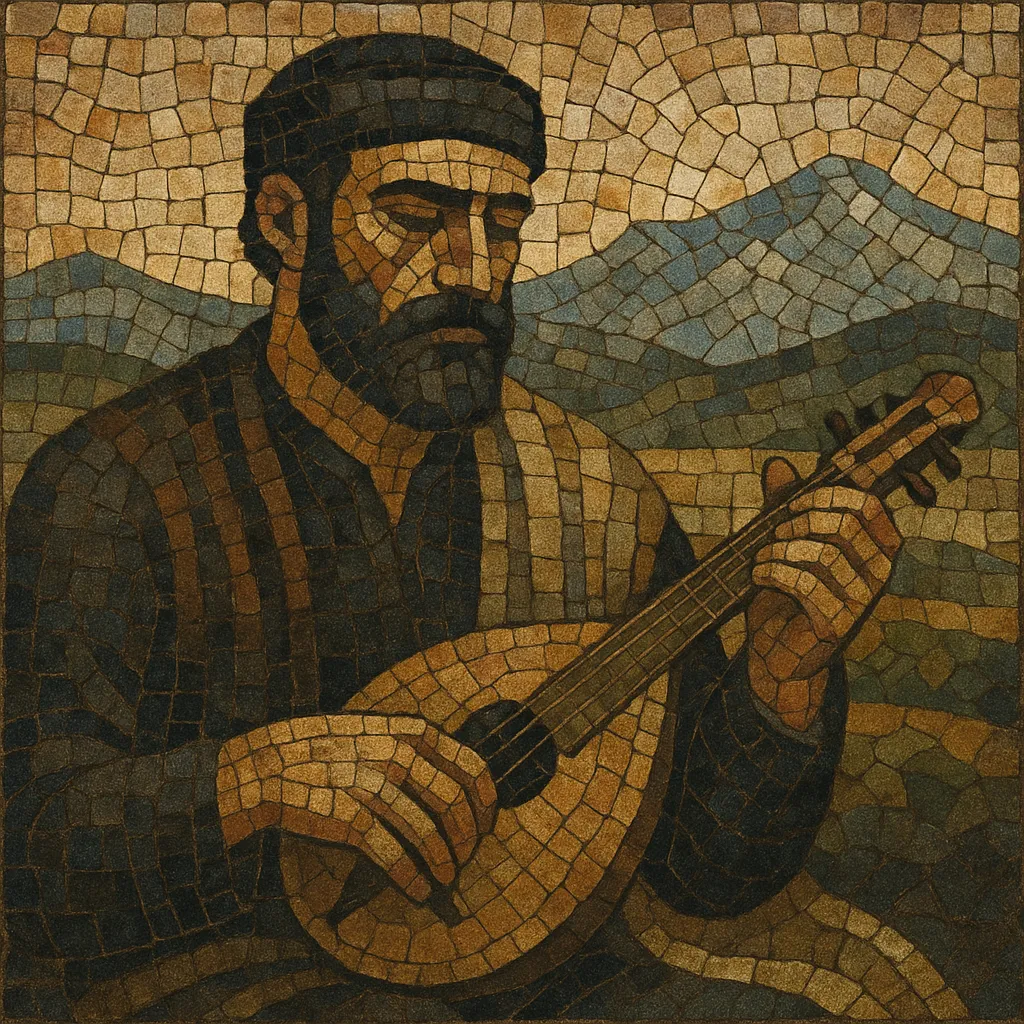Rizitika are traditional Cretan folk songs associated with the “rizes” (roots/foothills) of the White Mountains in western Crete. They are typically sung a cappella by male voices, in a sober, stately manner, with a leader-chorus practice and little to no instrumental accompaniment.
The songs divide broadly into two functional types: of the table (tsis távlas), sung at feasts and gatherings, and of the road (tis strátas), sung while traveling or marching. Texts are most often in the 15‑syllable Greek political verse and treat themes of heroism, exile, resistance, death, and the harsh beauty of Cretan life.
Musically, rizitika employ modal melodies close to Byzantine chant and Greek demotic styles, favoring free or flexible rhythm, narrow ambitus, and unison or lightly heterophonic group delivery rather than harmony. Their tone is austere and epic, designed to carry words and communal memory above musical ornament.
Rizitika likely coalesced during the late Byzantine and early Venetian periods in Crete, with oral roots that may stretch earlier. Their name points to the “rizes” (foothills) of the Lefká Óri (White Mountains), where clan-based communities preserved distinct vocal traditions. The repertoire grew through centuries of upheaval (Venetian and Ottoman rule), embedding narratives of resistance and local history.
Sung largely a cappella, rizitika use a leader–chorus practice and the Greek 15‑syllable political verse. Two core functional categories emerged: of the table (for communal banquets and rites of hospitality) and of the road (for movement, labor, and kinship bonds). Melodically, they align with Byzantine modal thinking and demotic Greek song, favoring unison or light heterophony over Western harmony and keeping rhythm flexible to serve the text.
Across the 19th and early 20th centuries, rizitika circulated as oral poetry and song among shepherds, villagers, and resistance fighters. In the 20th century, collectors and Cretan performers brought them to wider Greek audiences through radio, records, and festivals, while maintaining their local, communal character.
From the late 20th century onward, major Cretan artists and choirs recorded rizitika, presenting them in concerts and curated albums. Modern interpretations remain close to the unaccompanied tradition, sometimes adding lyra or laouto drones sparingly. Today, rizitika function both as living heritage at local feasts and as emblematic Cretan song on national and international stages.


